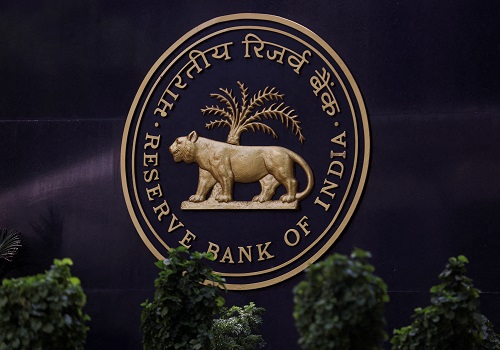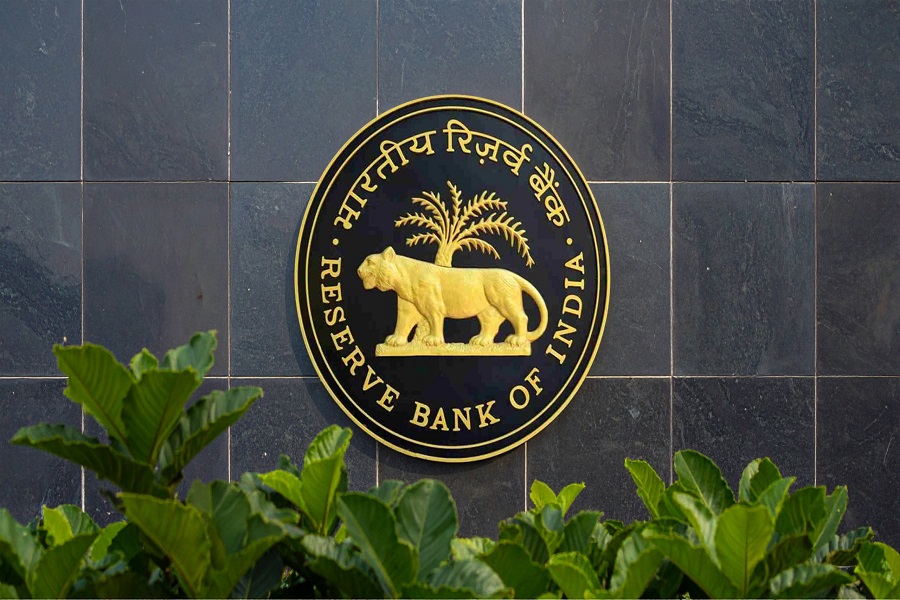2025-10-28 12:02:49 pm | Source: PGIM India Mutual Fund

Investors may consider allocating to Corporate Bond Funds with portfolio maturities up to 5 years, while taking tactical positions in duration via Dynamic Bond Funds. A 12–18 month investment horizon is advisable. Money market instruments with maturities up to 1 year also offer attractive risk-reward opportunities for short-term investors.
We expect the 10-year bond yield to trade in the 6.40%–6.70% range over the next month.
Headline CPI inflation fell to an eight-year low of 1.54%, implying an average of 1.7% for the current quarter—below the RBI’s forecast of 1.8%. This marks the lowest Consumer Price Index (CPI) print since June 2017. Food inflation remains benign, while core inflation rose to 4.60% in September from 4.2% in August. “Core-core” CPI (excluding food, fuel, gold, and gasoline) remained steady at 3.30%, slightly higher than August’s 3.1%. The core CPI is at a 25-month high, driven by a sharp rise in gold prices, although GST cuts may help moderate core inflation going forward.
An unusual increase in housing inflation—0.8% MoM—also contributed to the rise in core CPI, deviating from the typical pattern of a flat housing index in September over the past five years. Inflation is likely to average close to 1% in the next quarter, significantly below the RBI’s forecast of 1.8%, which may prompt the central bank to revise its inflation target further in the upcoming MPC meeting.
The focus this month has shifted to the Indian Rupee (INR), which recently
approached its all-time low against the US Dollar. RBI intervention provided
temporary relief, but the INR depreciated again on October 27. The RBI has rebuilt its short position in USD forwards, with estimated interventions amounting to approximately USD 35 billion since July. Consequently, USD forward shorts are likely much higher than the USD 53.4 billion reported at the end of August.
Foreign Portfolio Investment (FPI) flows into equities reversed course, with USD 1.36 billion of inflows month-to-date (MTD). The bond market also saw inflows of USD 1.48 billion MTD, bringing calendar year-to-date (CYTD) inflows to USD 7.35 billion—making it the second-best year for debt market FPI inflows since 2017.
The Overnight Indexed Swap (OIS) curve remained stable. The 1-year OIS is
unchanged at 5.46%, while the 5-year OIS has declined by 8 bps since the end of September, currently trading at 5.76%. Money market yields have risen due to tight interbank liquidity, driven by increased currency in circulation (CIC) and RBI’s FX market interventions. Durable liquidity has declined by approximately ?80,000 crore since the start of the month.
Three-month maturity Certificates of Deposit (CDs) are trading around
6.05%–6.10%, while one-year CDs are at 6.45%–6.50%. The benchmark 10-year bond yield is trading around 6.54%, down 3 bps from the end of September but up 3 bps from October 1 (MPC policy day). Overall, yields are 2–3 bps lower than end-September levels but flat to slightly higher compared to early October.
International Markets
Views on Weekly Fixed Income by Puneet Pal, Head-Fixed Income, PGIM India Mutual Fund

Below the Views on Weekly Fixed Income by Puneet Pal, Head-Fixed Income, PGIM India Mutual Fund
Favourable Macro Trends Support Rate Cut Expectations; Tactical Bond Allocation Advised
Our View:
While the initial optimism post-MPC has moderated, market focus has shifted to the INR and its potential influence on RBI and MPC decisions in the upcoming policy meeting. We continue to expect a 25 bps rate cut in December, although INR volatility—viewed by RBI as speculative—could complicate matters.
Nonetheless, macroeconomic indicators remain supportive: headline CPI is below forecast, core inflation is contained, and growth is expected to be in the
6.50%–6.70% range for FY26, with GST rationalisation providing a tailwind.
Nonetheless, macroeconomic indicators remain supportive: headline CPI is below forecast, core inflation is contained, and growth is expected to be in the
6.50%–6.70% range for FY26, with GST rationalisation providing a tailwind.
Investors may consider allocating to Corporate Bond Funds with portfolio maturities up to 5 years, while taking tactical positions in duration via Dynamic Bond Funds. A 12–18 month investment horizon is advisable. Money market instruments with maturities up to 1 year also offer attractive risk-reward opportunities for short-term investors.
We expect the 10-year bond yield to trade in the 6.40%–6.70% range over the next month.
Indian Markets
Bond yields have trended lower so far this month, driven by optimism following the Monetary Policy Committee (MPC) meeting earlier in October. Yields have declined across the curve as markets interpreted the MPC’s stance as dovish, with a increased probability of a policy rate cut in the December meeting, especially after the RBI revised its inflation forecast downward.
Concerns on the fiscal front have also eased. The projected revenue loss due to Goods and Services Tax (GST) rationalisation is not expected to result in additional borrowings. Furthermore, in its H2 borrowing calendar, the RBI reduced the supply of long-duration bonds, and state governments have also lowered their borrowing estimates for Q3 FY26. These factors have collectively supported the easing of bond yields.
Concerns on the fiscal front have also eased. The projected revenue loss due to Goods and Services Tax (GST) rationalisation is not expected to result in additional borrowings. Furthermore, in its H2 borrowing calendar, the RBI reduced the supply of long-duration bonds, and state governments have also lowered their borrowing estimates for Q3 FY26. These factors have collectively supported the easing of bond yields.
Headline CPI inflation fell to an eight-year low of 1.54%, implying an average of 1.7% for the current quarter—below the RBI’s forecast of 1.8%. This marks the lowest Consumer Price Index (CPI) print since June 2017. Food inflation remains benign, while core inflation rose to 4.60% in September from 4.2% in August. “Core-core” CPI (excluding food, fuel, gold, and gasoline) remained steady at 3.30%, slightly higher than August’s 3.1%. The core CPI is at a 25-month high, driven by a sharp rise in gold prices, although GST cuts may help moderate core inflation going forward.
An unusual increase in housing inflation—0.8% MoM—also contributed to the rise in core CPI, deviating from the typical pattern of a flat housing index in September over the past five years. Inflation is likely to average close to 1% in the next quarter, significantly below the RBI’s forecast of 1.8%, which may prompt the central bank to revise its inflation target further in the upcoming MPC meeting.
The focus this month has shifted to the Indian Rupee (INR), which recently
approached its all-time low against the US Dollar. RBI intervention provided
temporary relief, but the INR depreciated again on October 27. The RBI has rebuilt its short position in USD forwards, with estimated interventions amounting to approximately USD 35 billion since July. Consequently, USD forward shorts are likely much higher than the USD 53.4 billion reported at the end of August.
Foreign Portfolio Investment (FPI) flows into equities reversed course, with USD 1.36 billion of inflows month-to-date (MTD). The bond market also saw inflows of USD 1.48 billion MTD, bringing calendar year-to-date (CYTD) inflows to USD 7.35 billion—making it the second-best year for debt market FPI inflows since 2017.
The Overnight Indexed Swap (OIS) curve remained stable. The 1-year OIS is
unchanged at 5.46%, while the 5-year OIS has declined by 8 bps since the end of September, currently trading at 5.76%. Money market yields have risen due to tight interbank liquidity, driven by increased currency in circulation (CIC) and RBI’s FX market interventions. Durable liquidity has declined by approximately ?80,000 crore since the start of the month.
Three-month maturity Certificates of Deposit (CDs) are trading around
6.05%–6.10%, while one-year CDs are at 6.45%–6.50%. The benchmark 10-year bond yield is trading around 6.54%, down 3 bps from the end of September but up 3 bps from October 1 (MPC policy day). Overall, yields are 2–3 bps lower than end-September levels but flat to slightly higher compared to early October.
International Markets
The US Federal Reserve is expected to cut policy rates further on October 29 and may also announce the end of Quantitative Tightening (QT). The yield curve remains steep.
Above views are of the author and not of the website kindly read disclaimer
Disclaimer:
The content of this article is for informational purposes only and should not be considered financial or
investment advice. Investments in financial markets are subject to market risks, and past performance is
not indicative of future results. Readers are strongly advised to consult a licensed financial expert or
advisor for tailored advice before making any investment decisions. The data and information presented
in this article may not be accurate, comprehensive, or up-to-date. Readers should not rely solely on the
content of this article for any current or future financial references.
To Read Complete Disclaimer Click Here
Latest News

Daily Market Outlook 08th December 2025 by FundsIndia

Aluminium futures trade higher on rising demand

Quote on Market 08th December 2025 by Mr. Vikram Kas...

Views on Morning Market 08th December 2025 by Dr. VK...

Market outlook improving on strong growth, policy su...

PTC Industries gains on BSE

India Strategy : RBI steps in ? Strong positive for ...

BRO sets single-day record inaugurating 125 infrastr...

Crude oil futures gain on Fed rate cut hopes

RBI MPC : The policy triad of rate cut, liquidity, a...










